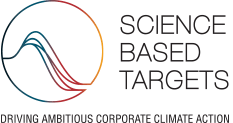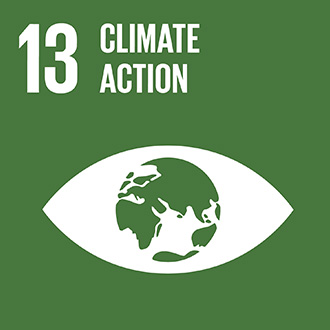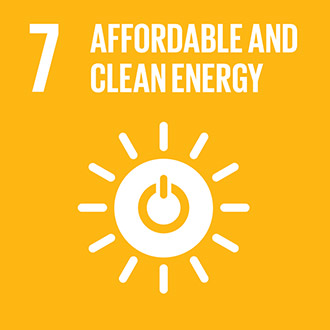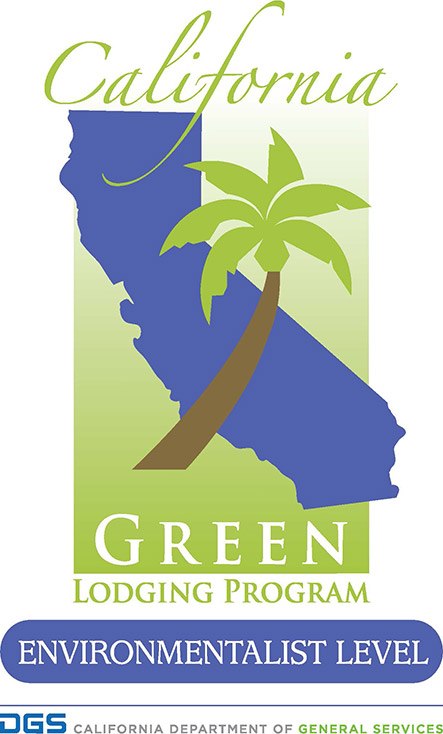Our 2030 Reduction Targets
*Target is compared to a 2010 baseline. Our scope 1+2 greenhouse gas emissions reduction target is in line with a 46% absolute reduction in Scope 1+2 greenhouse gas emissions from 2019 to 2030, as validated by the Science Based Targets initiative.
Our 2021 Results & Progress
In 2021, we announced updated and more ambitious targets for reducing our environmental impact, including a net-zero target in line with a 1.5°C future. We have joined the Science Based Targets initiative and set an interim emissions reduction target for 2030 to help us get there. See our Environmental section for more information on our targets.
EMISSIONS REDUCTION
51%
absolute reduction
2021 vs 2010
3% like-for-like increase per SF 2021 vs 2020
MEASURING OUR FOOTPRINT
In order to reduce our environmental footprint, we measure where we have been and where we are now. To this end, we have tracked our greenhouse gas emissions, energy and water usage, and waste production since we launched EarthView in 2010.
Since EarthView’s inception, we have also implemented data management systems that allow us to confidently report high quality, non-financial data, better manage our footprint, and identify opportunities for continual improvement.
Biodiversity Policy
At Hersha, we seek to promote biodiversity as an integral part of our sustainability efforts. We minimize our impact on local biodiversity through our resource efficiency programs and holistic waste management that includes packaging, business waste, operational waste, food waste, and wastewater. Our hotels use only non-plastic straws and stirrers to prevent these items from littering our oceans and harming wildlife. Additionally, as a part of our philanthropic efforts, our associates regularly participate in volunteer efforts that protect and promote biodiversity, from community clean-ups to ecological restoration. As we seek to increase the sustainability and eco-friendliness of our business, we will continue to evaluate the potential for biodiversity-improving developments, including pollinator-friendly urban environments like green roofs.
EFFICIENT BUILDINGS AND OPERATIONS
Buildings have an outsized impact on our environment. According to a joint report published by the UN Environment Programme and the International Energy Agency, buildings and construction account for 39% of global energy-related emissions. We implement green leases in all of our property agreements and strive to run our buildings as efficiently and sustainably as possible.
RENEWABLE ENERGY & NON-EMITTING TRANSPORTATION
We believe transitioning to an economy run on clean energy is imperative to curb climate change and maintain a livable future for our society. To support this endeavor, Hersha is committed to sourcing clean, renewable energy to power and light our hotels, as well as spurring the growth and availability of electric and non-emitting transportation options in our communities.
Electric and non-emitting Transportation
To encourage the reduction of emissions from transportation, we are installing electric vehicle charging stations across the portfolio, providing electric house cars when possible, encouraging exploration of local neighborhoods through walking and biking, and educating guests on public transportation options.

Electric Vehicle Charging Station: These efforts support the expansion of a larger charging infrastructure, which is needed to spur the transition away from combustion vehicles. Currently, we have electric vehicle charging stations at 8 of our hotels, with a target to eventually have charging stations at 20 of our hotels.

Electric House Car: Our Ambrose Hotel has an electric house car, a Tesla, that transports guests to and from popular destinations. We evaluate options to purchase electric house cars for other hotels as transportation needs arise.
Easy Walkability & Access to Public Transportation
Our hotels are mostly based in dense, urban neighborhoods, with a portfolio-wide Walk Score of 81 out of 100 across the portfolio. A high Walk Score indicates there is a greater number of diverse amenities that are easily accessible via walking. Our Courtyard by Marriott Los Angeles Westside also communicates public transportation route information to guests via their GoBoard. This reduces the number of single-passenger emitting rides taken to and from the hotel, as well as supports local transportation systems.
PLAN TO ACHIEVE OUR TARGETS
In 2019, we announced ambitious 2030 targets for our greenhouse gas emissions, energy and water reductions, and waste diversion. In 2021, we updated these targets to be in line with the SBTi Business Ambition for 1.5C, increasing the ambition of our GHG emissions reduction targets and aligning with a path to achieve net-zero emissions by 2050. To achieve these, we are focused on projects and initiatives that increase energy efficiency, water efficiency, the amount of waste diverted from landfills, and the renewability of our energy source with sub-targets for some of these initiatives to track our progress towards reaching our overall environmental targets.
LED Lighting
- Our energy-efficient lighting strategy is focused on retrofitting existing lighting with LEDs, which are more efficient than incandescent and fluorescent lighting and have much longer lifespans.
- LEDs have been installed at 100% of our hotels.
- We continue to purchase and install LEDs as hotels are renovated.
- We are on track to install LEDs across 100% of our portfolio.
Guestroom EMS
- Our HVAC efficiency strategy includes installing guestroom energy management systems (EMS).
- Our guestroom EMS is programmed to reduce energy consumption while rooms are unrented or unoccupied, saving our hotels 25-30% in heating and cooling costs.
- Engineering teams are trained to review their hotel’s energy management system.
- Currently, EMS has been installed at 85% of our eligible, HVAC compatible properties and is continuing to be implemented at all new acquisitions.
High-Efficiency Water Fixtures
- Water fixtures, including faucets and showerheads, can make up the majority of a hotel’s water usage.
- We have increased the water efficiency of these fixtures through balanced flows that still maintain guest comfort.
- On average, properties with high-efficiency water fixtures lower their water usage by 20-30%.
- We have high-efficiency water fixtures installed at 78% of our hotels in regions with “high” or “extremely high” baseline water stress.
Laundry water reuse systems
- For our hotels with on-site laundry, washers consume a significant amount of water every year. Laundry-water reuse systems use recycled and filtered laundry grey water for 70-80% of our laundry cycles. We are continuing to evaluate the opportunities for the installation of these systems at our other hotels.
- To date, our laundry-water reuse systems have reused 2,440 kGal of water, which would fill more than three Olympic-sized swimming pools.
Non-plastic straws & stirrers
- To avoid the detrimental environmental impacts of single-use plastic, our hotels only use paper straws and wooden stirrers in their operations. Over the course of a year, we avoid using over 4 million plastic straws and stirrers, preventing these items from littering our oceans and harming wildlife.
 Our near-term science-based greenhouse gas emissions target has been verified by the Science-Based Targets initiative as aligned with necessary GHG reductions to limit global temperatures to 1.5°C (vs. 1C currently) above pre-industrial levels.
Our near-term science-based greenhouse gas emissions target has been verified by the Science-Based Targets initiative as aligned with necessary GHG reductions to limit global temperatures to 1.5°C (vs. 1C currently) above pre-industrial levels.




